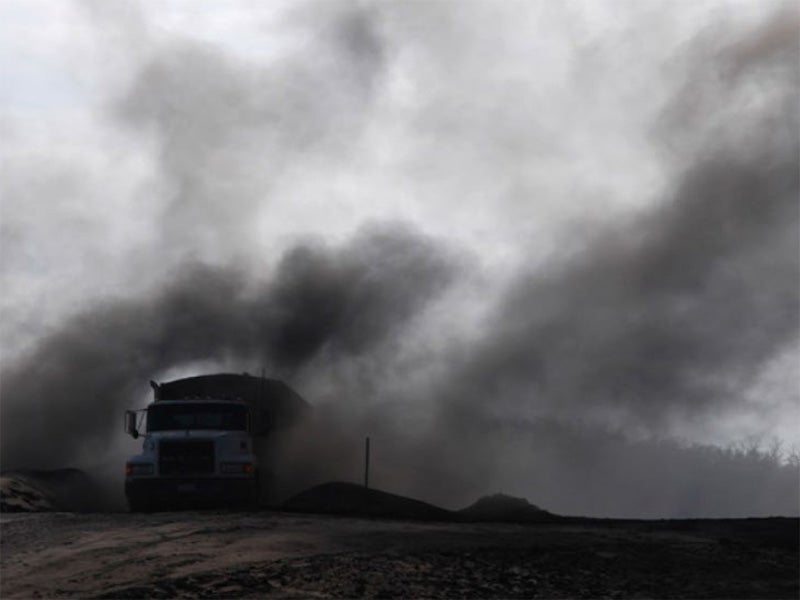Ash in Lungs: How Breathing Coal Ash is Hazardous to Your Health
Coal ash dust causes asthma attacks, lung disease, even cancer.

This page was published 11 years ago. Find the latest on Earthjustice’s work.
Take a deep breath—but not too deep if you live near a coal ash dumpsite, because the air pollution from coal ash dust can be dangerous.
Today, Physicians for Social Responsibility and Earthjustice released a new report on the harm to public health from breathing toxic coal ash titled Ash in Lungs: How Breathing Coal Ash is Hazardous to Your Health. In communities across the nation, airborne dust from thousands of coal ash lagoons, landfills, minefills and reuse projects threaten our health. Co-authored by Dr. Alan Lockwood, who also wrote The Silent Epidemic: Coal and the Hidden Threat to Health and is emeritus professor at the University of Buffalo, the report describes the harmful effects of simply breathing near coal ash disposal sites.
Fly ash particles (a major component of coal ash) can become lodged in the deepest part of your lungs, where they trigger asthma, inflammation and immunological reactions. Studies link these particulates to the four leading causes of death in the U.S.: heart disease, cancer, respiratory diseases and stroke. In addition, respirable crystalline silica in coal ash can also lodge in the lungs and cause silicosis or scarring of lung tissue, which can result in disabling and sometimes fatal lung disease and cancer. Lastly, the presence of heavy metals in coal ash, such as lead, arsenic and hexavalent chromium, and the radioactivity of some ashes may increase the harm caused by inhalation.
To prevent further harm to public health, the EPA must act decisively with its upcoming coal ash rule to stop exposure to toxic dust. No federal rules prevent toxic dust from blowing into fence line communities, despite EPA’s acknowledgement that threats to health exist when coal ash is not covered daily at coal ash landfills. In fact, the EPA found that there is “a strong likelihood that dry-handling [of coal ash] would lead to the [national air quality standards] being exceeded absent fugitive dust controls.”
The EPA concluded that daily controls are needed to prevent unhealthy levels of particulates. Yet the great majority of states do not require daily cover or controls.
Protection of citizens living near coal ash can only be accomplished by federally enforceable regulations. Communities across the nation are hurt by toxic dust because adequate controls are not in place to protect public health. Often those harmed are communities of color or low-income communities whose economic hardships make them even more vulnerable to injury. Many of the sites where damage to health has already occurred are located in states that currently have some of the worst coal ash programs in the nation, including Kentucky, Alabama, Oklahoma and New Mexico.
With damage to health from coal ash dust documented across America, our hopes lie with the EPA to protect the nation from this preventable harm.
Established in 2008, Earthjustice’s Northeast Office, located in New York City, is at the forefront of issues at the intersection of energy, environmental health, and social justice.